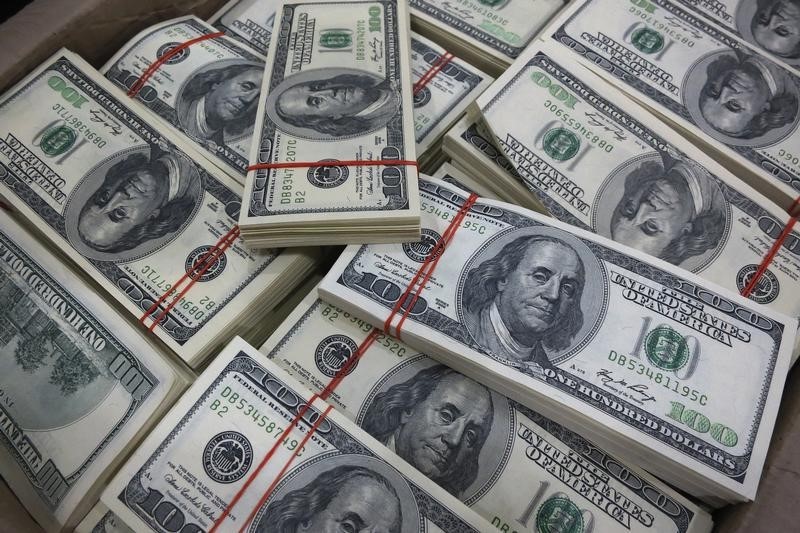
At 04:30 ET (08:30 GMT), the Dollar Index, which tracks the greenback against a basket of six other currencies, rose 0.1% to 104.735, after dipping as low as 104.63 overnight.
The dollar retreated on Thursday after the official data showed the U.S. economy grew at an 1.3% annualised rate in the first quarter, down from the advance estimate of 1.6%.
This sign of slowing growth resulted in markets pricing in a 55% chance of rate cuts to begin in September, up from 51% a day before, according to the CME Group’s (NASDAQ:CME) FedWatch Tool.
However, inflation remains a concern for the Federal Reserve, with many officials cautioning against expectations of early interest rate cuts.
Dallas Federal Reserve Bank President Lorie Logan said on Thursday that while she believes inflation is still heading to the Fed’s 2% target, it is too early to consider cutting interest rates.
With this in mind, traders are waiting for confirmation from Friday’s PCE price index data, the Fed’s preferred inflation gauge, for confirmation that inflation remains sticky.
In Europe, EUR/USD traded 0.1% lower to 1.0823 after German retail sales fell more than expected in April, falling by 1.2% compared with the previous month.
This illustrates the difficulties consumers are having in the eurozone’s largest economy, as the European Central Bank prepares to cut interest rates next week.
However, uncertainty exists over what the central bank will decide upon next in terms of interest rates, putting the eurozone’s May inflation release later in the session firmly in focus.
The eurozone CPI is expected to rise 2.5% on the year, up from 2.4$% the prior month, but there is upside potential given a stronger-than-expected April inflation reading for Germany on Wednesday.
GBP/USD fell 0.2% to 1.2712, falling from 1.2801 on Tuesday for the first time since March 21.
In Asia, USD/JPY traded 0.3% higher to 157.23, rebounding after falling sharply in overnight trade.
Consumer price index data from Tokyo showed inflation in Japan’s capital grew as expected in May, although it still remained relatively weak. Soft inflation bodes poorly for the yen, as it gives the Bank of Japan less impetus to begin raising interest rates.
USD/CNY traded 0.2% higher at 7.2438, moving back towards six-month highs hit earlier this week.
Purchasing managers index data showed that Chinese business activity deteriorated in May after some improvement over the past two months. Manufacturing PMI unexpectedly fell back into contraction territory, while non-manufacturing PMI grew at a slower-than-expected pace.
While the readings presented renewed headwinds for the Chinese economy, they also fueled bets on increased stimulus spending from Beijing to support growth. But said spending, which is likely to entail looser monetary conditions, is likely to bode poorly for the yuan.
To read the full article, Click Here
